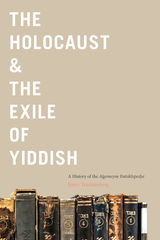11 start with H start with H


The Harvard Guide has a long and distinguished history in the annals of reference works. First prepared in 1896 by Albert Bushnell Hart and Edward Channing, it was a unique scholarly tool. Revised in 1912 by Hart, Channing, and Frederick Jackson Turner, the Guide carried its entries through 1910 and became the standard text.
In 1954 the Harvard Guide to American History appeared, prepared and edited by members of the History Department of Harvard: Oscar Handlin, Arthur Meier Schlesinger, Samuel Eliot Morison, Frederick Merk, Arthur Meier Schlesinger, Jr., and Paul Herman Buck. A one-volume compendium, the Guide became a classic in historical studies and won a place in every important library—both public and private—of American history.
With its revised republication in 1974, Frank Freidel and Richard K. Showman have made the Guide the most essential reference book for historians. Their work was sponsored by the Charles Warren Center for Studies in American History at Harvard. This thoroughly revised, comprehensive guide to American history reflects the explosive growth in historical publications and materials, and the expanding interests of American historians. About one third of the entries are new. These not only represent the surge of books and articles, but also reflect new areas of history. The brief topical sections in the last edition have grown into a 300-page coverage of economic, social, and intellectual history. Demography, social structure, ethnicity, and the new urban and cultural dimensions of history find a place. Colonial history receives both topical and chronological treatment in an all-inclusive section. United States history since 1759, primarily political and diplomatic, appears in the familiar chronological form.
Enlarged and up-to-date sections cover research methods and material. There are practical suggestions on research, writing, and publication, and extensive citation of finding aids and bibliographies to introduce the user to collections of printed materials, public documents, microform, manuscripts, and archives. The section on care and editing of manuscripts, long standard on the subject, appears unchanged; other sections, such as those on automated data retrieval, quantitative techniques, and oral history, reflect innovations in the historian’s craft. The new Guide has been recast in columnar form to make it easier to locate references and includes cross-reference by pages and sections to facilitate faster use.





The Holocaust & the Exile of Yiddish untangles the complicated saga of the Algemeyne entsiklopedye and its editors. The editors continued to publish volumes and revise the encyclopedia’s mission while their primary audience, Eastern European Jews, faced persecution and genocide under Nazi rule, and the challenge of reestablishing themselves in the first decades after World War II. Historian Barry Trachtenberg reveals how, over the course of the middle decades of the twentieth century, the project sparked tremendous controversy in Jewish cultural and political circles, which debated what the purpose of a Yiddish encyclopedia should be, as well as what knowledge and perspectives it should contain. Nevertheless, this is not only a story about destruction and trauma, but also one of tenacity and continuity, as the encyclopedia’s compilers strove to preserve the heritage of Yiddish culture, to document its near-total extermination in the Holocaust, and to chart its path into the future.



This exceptional bibliography, a pioneer work in its field, surveys Hungarian literature from its beginnings to 1965. A companion to the author's An Introductory Bibliography to the Study of Hungarian Literature, this volume contains over 4500 numbered entries which report on the first and later editions of the works of 162 authors. Mr. Tezla has included the major figures from each literary period and has based his selection of authors on the importance of their original writings to the development of this national literature. Significant authors who established substantial careers in Hungary and continued to write after their emigration are also represented in this comprehensive volume, as are a number of figures of secondary literary import.
Mr. Tezla begins his coverage of each author with a brief biographical account offering pertinent data on family background, education, and literary activities. The sketch provides as well observations on the writings of the author and his place in Hungarian literature and a record of the languages into which his works have been translated. Further material on the author is divided into annotated sections noting bibliographical, biographical, and critical studies.
As a means of helping the reader obtain titles through inter-library loan or through photographic processes, Mr. Tezla also includes location symbols for numbered items known to be available in selected libraries in the United States and Europe. Five appendixes, a glossary, and indexes provide additional bibliographic tools for both the beginning student and the advanced scholar researching Hungarian literature. The work is invaluable also as a buying guide for libraries seeking to develop a Hungarian collection.

“His pursuit of learning gave force and unity to everything he did…in his books, as in his learning, he showed that scholarship could have an austere splendor of its own.”—Herschel Baker in his biographical sketch
Hyder Rollins’s publications, ranging from the Elizabethans to Keats, admirably exemplified his dedication to scholarship. This bibliography constitutes, in terms of quantity alone, a record of formidable achievement, and the ordering of this wealth of publication gives scholars the means of easy reference to a sequence of impeccable research.
Sponsored by the Department of English, Harvard University, this tribute to Hyder Rollins also includes a list of the more than one hundred doctoral dissertations directed by him over the course of three decades.
READERS
Browse our collection.
PUBLISHERS
See BiblioVault's publisher services.
STUDENT SERVICES
Files for college accessibility offices.
UChicago Accessibility Resources
home | accessibility | search | about | contact us
BiblioVault ® 2001 - 2024
The University of Chicago Press









